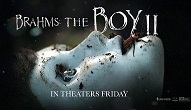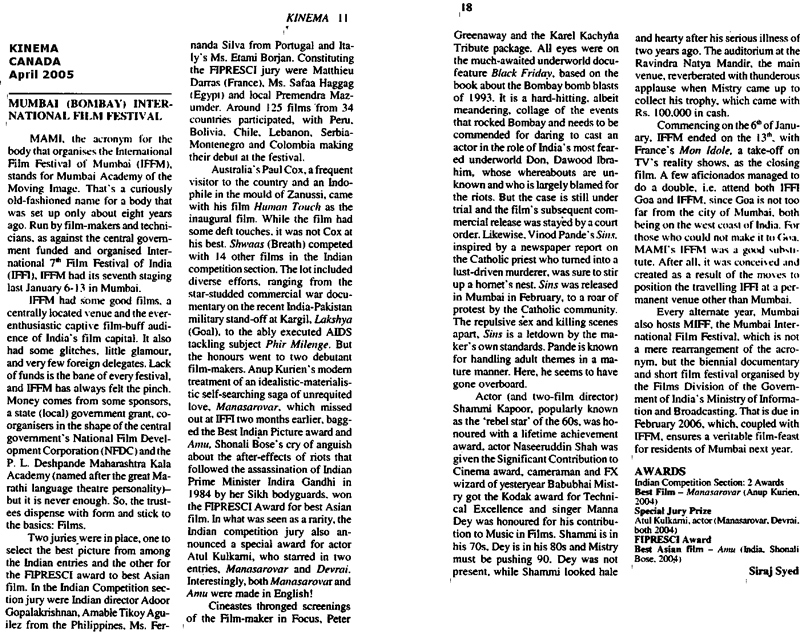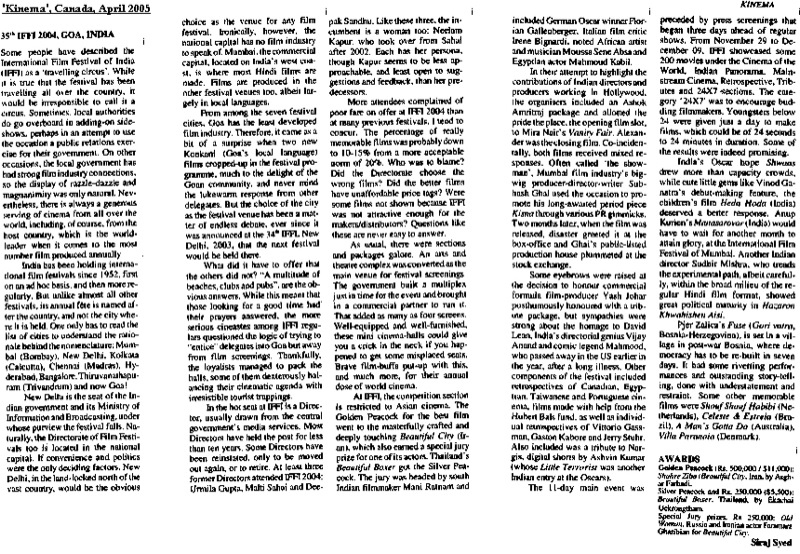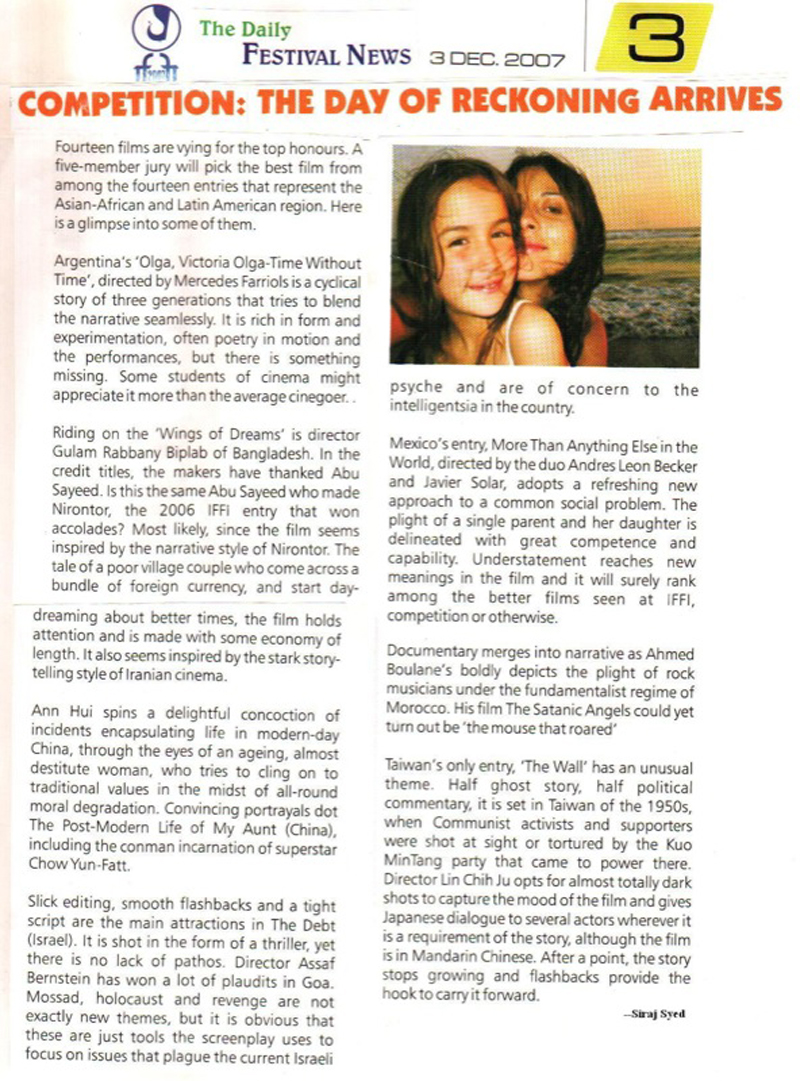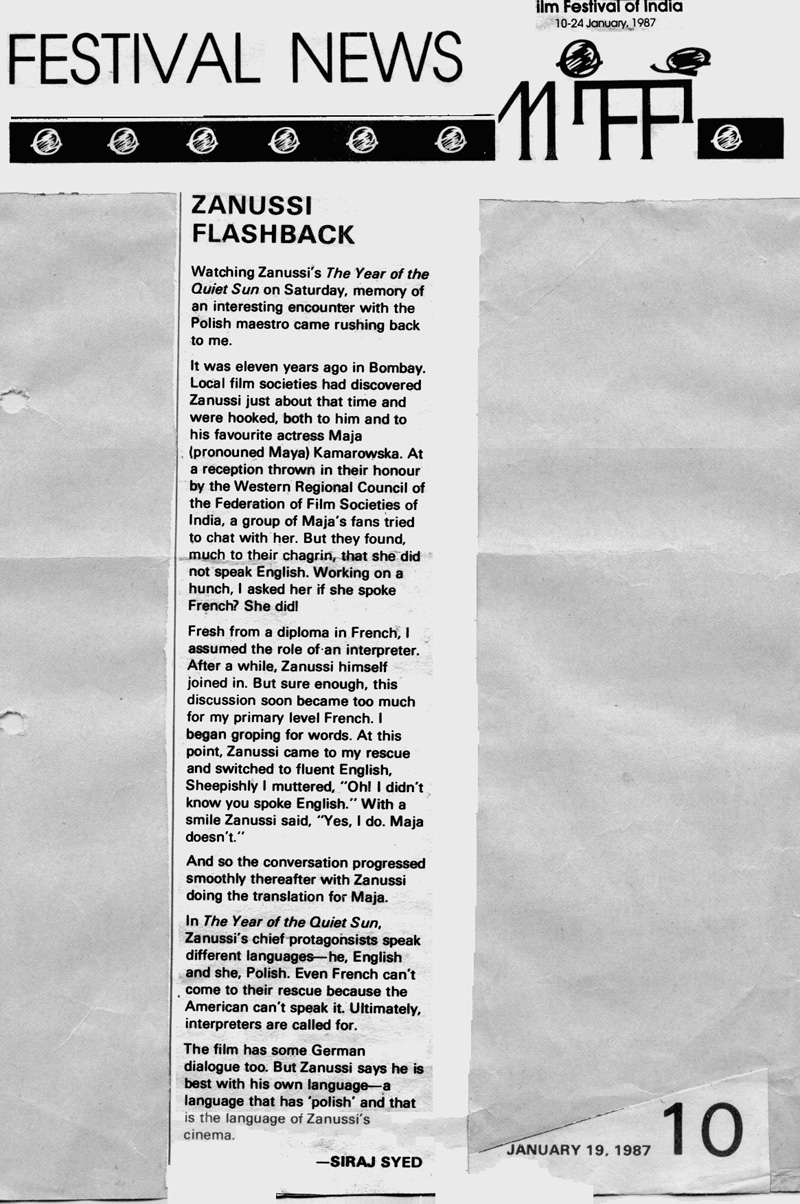|
|
||
|
Pro Tools
FILMFESTIVALS | 24/7 world wide coverageWelcome ! Enjoy the best of both worlds: Film & Festival News, exploring the best of the film festivals community. Launched in 1995, relentlessly connecting films to festivals, documenting and promoting festivals worldwide. Working on an upgrade soon. For collaboration, editorial contributions, or publicity, please send us an email here. User login |
Brahms the Boy II, Review: Let sleeping dolls lie
Brahms the Boy II, Review: Let sleeping dolls lie A potentially scary movie that does not scare you loses all meaning. Avoiding tropes should not mean doing away with horrible goings on almost altogether. Brahms the Boy II is about a living doll (with apologies to Cliff Richard) that performs all its super-natural feats off camera, barring one or two, and that takes away the fear factor. Most of the film has a logically progressing narrative, but one that holds little interest to audiences who have turned up for some adult shock treatment. Young parents Liza, Sean and their son Jude live in London. During a masked robbery, Liza is almost killed and Jude stops speaking due to the trauma. Liza keeps getting nightmares, often reliving that horrible burglary. This affects the couple’s relations with each other, including their sex life. Sean suggests they take a break and spend a few days at a quiet countryside guest-house, part of the Heelshire Mansion estate, to which Liza agrees. They arrive at the place, which is huge, and has another bigger mansion, almost like a medieval castle, nearby. Jude now communicates using signs and by writing on a large writing pad with a sketch-marker pen. Jude, who already has a small teddy bear called Mr. Brown as his favourite toy, discovers a life-sized doll of a boy buried in the mud, when he sees a hand sticking out. He insists on taking it home. Liza cleans it thoroughly and even paints it, to restore it to its original condition. In the woods, they meet Joseph ‘Joe’, a man who carries a double barrel gun and has a dog on a leash. Joe says he prefers to live far away from the city, though people call him mad for staying in the back of the beyond. He feels city-folk are crazier than him. Jude gets so attached to the doll that he cannot live with him. Asked by his parents whether he has given the doll a name, he nods and writes ‘Brahms’. They ask him how he came up with that name, and he replies that the life-like doll gave itself that name. And soon afterwards, weird things start happening in that mansion, all related to the doll. Back-story is not an issue, because this one is a stand-alone sequel to the 2016 The Boy, though the writer and director are the same: Stacey Menear and William Brent Bell. Events in the earlier film were confined to the Heelshire mansion and a porcelain doll called Brahms. The earlier film had mixed reviews but jingled at the box-office. Both fronts look dicey this time around, though with a budget of a mere $10 million, recovery might not be difficult. It’s the same doll that gave you the creeps in The Boy, about which writer Menear had this to say, “The doll was going to come alive. That was the initial thing, was the doll was going to come to life and chase them around in a scary way. It just never felt right to me. I played around with the doll breaking and a spirit comes out. I think the reason I chose [the ending I did] was going back to the '70s films that I loved so much. There's this one called The Baby and another called Bad Ronald, and they're sort of these strange horror movies more than straight-up scary [ones]. I think horror movies now are main-stream. They never get really weird; they'll get really violent, but they'll never get strange.” And that is the point. In Brahms the Boy II, there is violence of the gory, not scary kind: A violent burglary, a mutilated dog, characters wielding double-barrel guns, a dinner-table turned over, a boy falling on a pointed stick that pierces right through him, a wooden club that is used to telling effect and a doll thrown into a fire. But none of these are shown in graphic detail, nor are they clearly attributed to a ghost. Given the behaviour of their son, the couple ought to have done much more than take counselling sessions through video-calling. In fact, the first thing they should have done would have been to get rid of the doll and head back home, to London. Their unwillingness to do these things comes across as illogical and irrational. What is the dog’s role in all this remains a mystery. Letting Brahms out of their sight on more than two occasions are cardinal signs, and searching for him in dark, creepy mansions, without a torch or any source of light only invites trouble. Since Brahms seems to be moving away from his position time and again, the best thing to do would be to tie him or be in the same room, to see what happens. It makes no sense for Brahms to switch on the TV without tuning to any channel, though it does come as a scary jerk initially. Mercifully, there are a negligible amount of smash cuts, with stereo-typed lines that go “Oh my God” and “Sorry Mom, I didn’t mean to scare you”. That would be fine, if there were genuine scares to compensate. We don’t want strange things, but then Menear and Bell ought to have worked out genuine horror. Of course, an overwhelming number of film-buffs know that there are no such things as ghosts and possessed dolls, yet some of them do come to watch a genuine super-natural thriller, willing to suspend disbelief, to large extent. Obviously, you need to suspend disbelief more in a horror flick than in a, say, drama or comedy. Now, as screenplay-writer and director, you need to weave a tale within such parameters that tread the boundary of real and natural and unreal and super-natural. Moving significantly into either domain would mean treading forbidden territory, for a horror narrative devoid of horror, or a straight drama with traces of horror would alienate fans of both genres. In the main cast are two Americans and two British actors. Though there is nothing to be held against such casting, a line or two justifying the choice does help identify with the parts. Katie Holmes (American; 41; Pieces of April, Batman Begins, Ocean’s 8) underplays the horror bit and tries to put up a nonchalant visage time and again, till the events get the better of her. As the son, Jude, Christopher Convery (11; American; By Dawn, TV—including Gotham) follows instructions well, but has little to do except remain a mute participant in the goings on. When the time comes for him to unleash horror, he dons a mask. Owain Yeoman (41; Welsh; American Sniper, The Belko Experience) is dignified, perhaps too dignified and cool, as Sean. Ralph Ineson (51; English Yorkshire accent; The Witch, Game of Thrones, Harry Potter, Guardians of the Galaxy) speaks with his trade-mark Yorkshire accent, often making his dialogue unintelligible to us non-British audiences. He looks mysterious and sinister enough. When he stops walking and looks back, you know trouble is brewing. How his dog got killed is lost in the accent. Bengaluru, India-born Anjali Jay (45; Night at the Museum: Secret of the Tomb, Blind Dating, The Age of Adaline) makes a good counsellor, with an easy-flowing dialogue delivery and calm presence. All three behind-the-camera departments--music by Brett Detar, cinematography Karl Walter Lindenlaub and editing by Brian Berdan--have acquitted themselves well, using technology at a bare minimum and letting events unfold at a leisurely pace. For a film clocking-in at 86 minutes, one cannot complain that it was too long. But one must protest that not much of what was happening held my interest. All the troubles of the hapless family begin when young Jude digs out a doll from its burial in a small forest ground. Now, if horror films can claim to have morals, the one that Brahms the Boy II offers would be: Let sleeping dolls lie! Evergreen singer, good old Harry Webb, aka Cliff Richard (now 80), was not referring to anything like this Brahms when he sang, ‘Got myself a cryin', talkin', sleepin', walkin', livin' doll’, in 1959. Rating: ** Trailer: https://youtu.be/A6caADGf8mw 21.02.2020 | Siraj Syed's blog Cat. : Anjali Jay Bengaluru Brett Detar Brian Berdan Christopher Convery Cliff Richard Harry Webb Karl Walter Lindenlaub Katie Holmes Livin' doll Owain Yeoman Ralph Ineson Stacey Menear The Boy William Brent Bell Hollywood FILM
|
LinksThe Bulletin Board > The Bulletin Board Blog Following News Interview with EFM (Berlin) Director
Interview with IFTA Chairman (AFM)
Interview with Cannes Marche du Film Director
Filmfestivals.com dailies live coverage from > Live from India
Useful links for the indies: > Big files transfer
+ SUBSCRIBE to the weekly Newsletter Deals+ Special offers and discounts from filmfestivals.com Selected fun offers
> Bonus Casino
User imagesAbout Siraj Syed Syed Siraj Syed Siraj (Siraj Associates) Siraj Syed is a film-critic since 1970 and a Former President of the Freelance Film Journalists' Combine of India.He is the India Correspondent of FilmFestivals.com and a member of FIPRESCI, the international Federation of Film Critics, Munich, GermanySiraj Syed has contributed over 1,015 articles on cinema, international film festivals, conventions, exhibitions, etc., most recently, at IFFI (Goa), MIFF (Mumbai), MFF/MAMI (Mumbai) and CommunicAsia (Singapore). He often edits film festival daily bulletins.He is also an actor and a dubbing artiste. Further, he has been teaching media, acting and dubbing at over 30 institutes in India and Singapore, since 1984.View my profile Send me a message The EditorUser contributions |

















